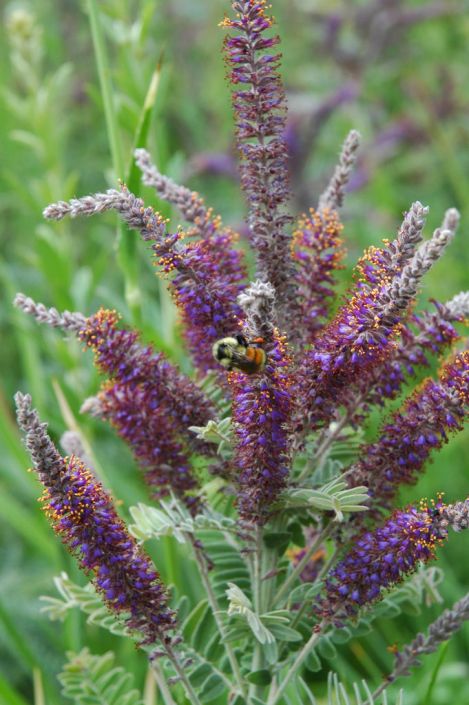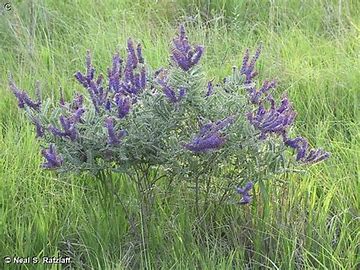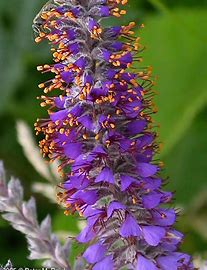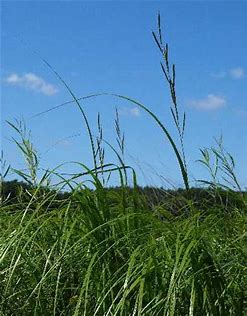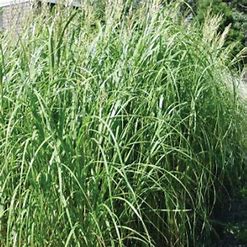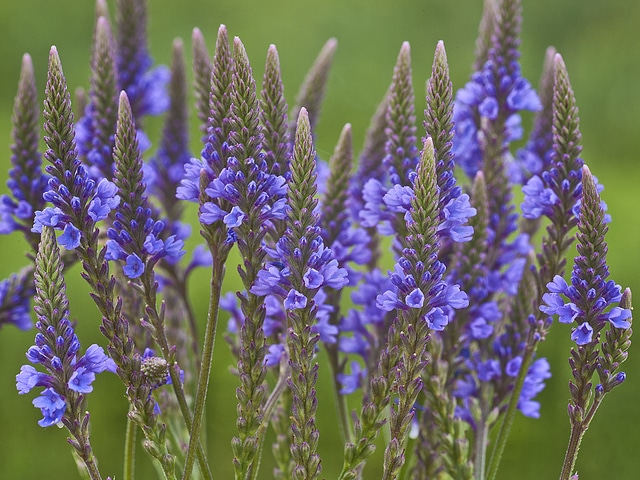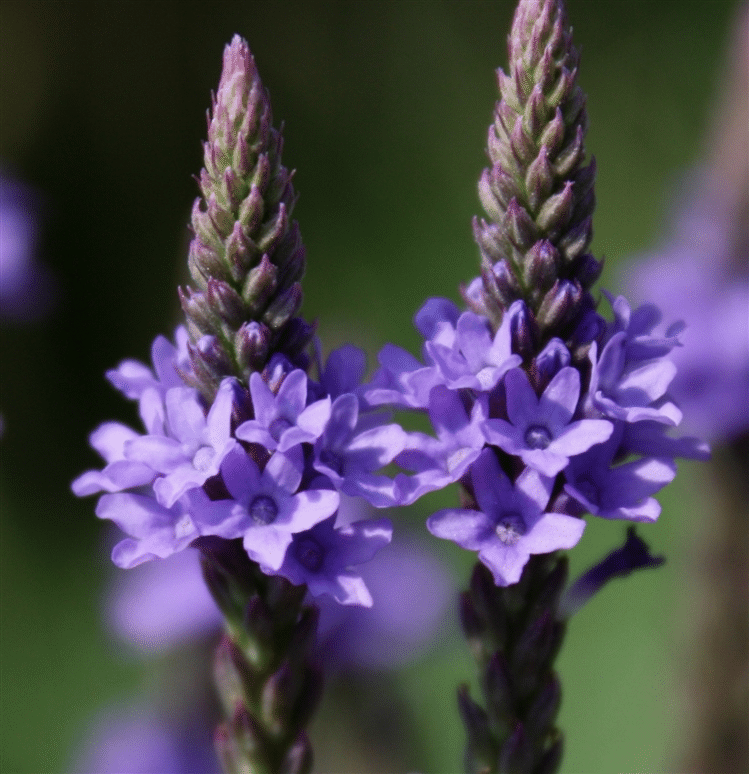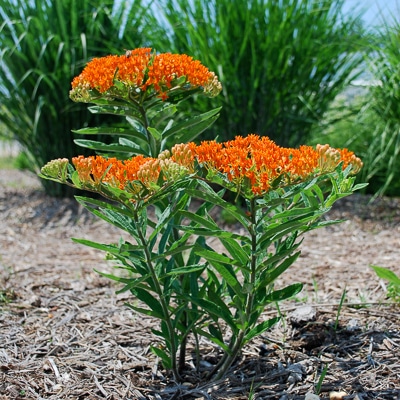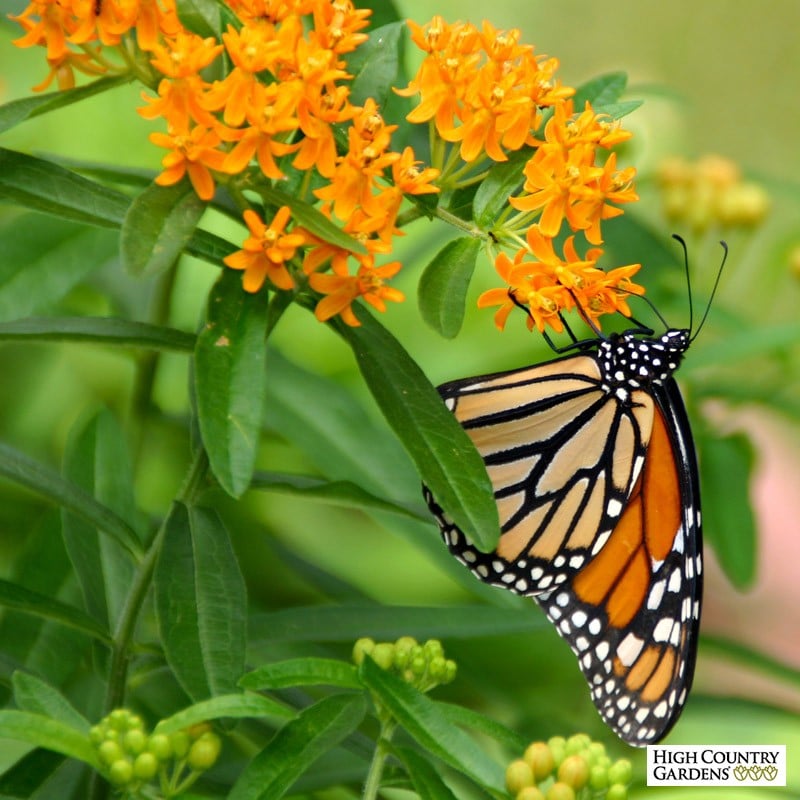Description
A shrub-like plant growing up to three feet tall, Lead Plant is topped by spike-like masses of tiny purple blossoms. Each flower has a single 1/4″-long petal curling around 10 orange-tipped stamens. It prefers full sun but will tolerate part shade. The branches will reach for light in partial shade conditions however, giving it a more sprawling form with less flowers. It is not picky about soil type, and will grow in all types of medium to very dry sandy, gravel, loam, and clay. Abundant bees, butterflies, moths, beetles and other beneficial insects will be attracted to Lead Plant.
The plant’s tough roots made pioneer plowing difficult, causing early settlers to dub it “Devil’s Shoestrings.” Its deep roots enable the plant to survive prairie fires and times of drought. After very tough winters, it may die back to the ground but the extreme long-lived nature of Lead Plant and its deep tap root will usually allow it to recover. Speculative accounts about its common name credit the dusky hue of the foliage or an old belief that the plant’s presence was an indicator of sub-surface lead ore. Lead Plant is part of the genus Amorpha and like the pea plant is a legume.
Click here for more information from USDA-NRCS.
